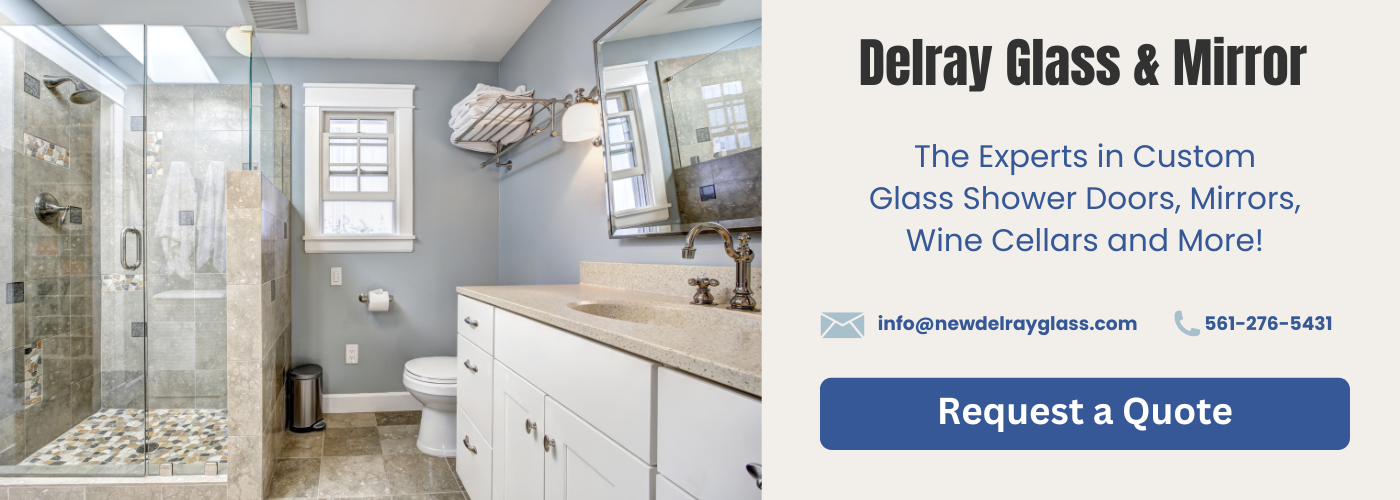**How Does the Hinge Design Vary Depending on the Size of the Shower Door?**
When it comes to crafting the perfect shower enclosure, the design and functionality of the hinges play a pivotal role. Shower door hinges might seem like a minor detail, but they are essential for ensuring the stability, durability, and ease of operation of the door. However, not all hinges are created equal, and their design can vary significantly depending on the size, weight, and type of the shower door. From small, lightweight doors to large, heavy frameless panels, hinge design must be carefully tailored to meet the demands of the specific application. But what factors influence these design choices, and how do they adapt to the varying dimensions of a shower door?
This article explores the critical elements that affect hinge design for shower doors of different sizes. First, we’ll delve into the **load-bearing capacity of hinges**, examining how the size and weight of a shower door dictate the strength and performance requirements of its hinges. Next, we’ll discuss the **materials and durability** of hinges, highlighting how the choice of materials can vary depending on the door’s dimensions and overall usage. The **placement and number of hinges** is another key consideration, as optimal support is vital for both safety and functionality. We’ll also compare the **types of hinges** commonly used for frameless versus framed shower doors, shedding light on how these designs differ depending on structural requirements. Finally, we’ll analyze the **impact of glass thickness** on hinge selection, as thicker glass panels demand more robust and specialized hinge designs.
By understanding these five aspects, homeowners, designers, and contractors can make informed decisions when selecting the appropriate hinges for shower doors of any size. Whether you’re looking to install a sleek, frameless enclosure or a more traditional framed design, the right hinge choice is the foundation of a safe and stylish shower space. Let’s dive deeper into the details that make hinge design such an integral part of shower door construction.


Load-Bearing Capacity of Hinges for Different Shower Door Sizes
The load-bearing capacity of hinges is a critical factor in the design of shower doors, as it directly influences the stability, safety, and functionality of the door. Shower door sizes vary widely, from compact designs for small bathrooms to larger doors for luxurious, spa-like enclosures. Each size requires hinges that are specifically engineered to handle the weight and dimensions of the door without compromising performance.
For smaller shower doors, lighter hinges are typically sufficient since the weight of the glass panel is lower. These hinges are often designed with a more compact form factor while still ensuring smooth operation and a secure fit. However, as the size of the shower door increases, the weight of the glass also grows. For larger doors, especially those made of thick tempered glass, the hinges need a much higher load-bearing capacity to support the additional weight. Heavy-duty hinges, often constructed with reinforced materials, are commonly used in these scenarios. They are designed to distribute the weight evenly and prevent sagging or misalignment over time.
Another consideration is the frequency of use. Larger doors, especially those in shared or commercial spaces, may experience more frequent opening and closing. In such cases, the load-bearing hinges must not only support the door’s weight but also withstand repeated use without wear or failure. Manufacturers often conduct rigorous testing to ensure that these hinges can endure long-term use while maintaining their integrity and performance.
In summary, the hinge design for shower doors is intricately linked to the size and weight of the door. Understanding the load-bearing requirements is essential for selecting the right hinges, as it ensures the door operates smoothly, remains aligned, and provides a safe and aesthetically pleasing experience for users.
### Material and Durability of Hinges Based on Door Dimensions
The material and durability of hinges play a critical role in ensuring the safety, functionality, and longevity of shower doors. The size and weight of the shower door directly influence the choice of hinge materials. Larger, heavier doors require hinges made from robust materials like stainless steel or solid brass, which can withstand significant stress over time without bending, warping, or corroding. On the other hand, smaller and lighter doors may use less heavy-duty materials, such as zinc alloys or aluminum, which are still durable but more cost-effective for lighter loads.
Durability is also a key factor because shower door hinges are constantly exposed to moisture, steam, and cleaning agents. For larger shower doors, where the hinges bear more weight, corrosion-resistant materials like marine-grade stainless steel are often preferred. These materials are specifically designed to endure high-moisture environments without degrading. Coatings such as chrome plating or powder coating can further enhance the hinge’s resistance to rust and wear, making them suitable for long-term use regardless of door size.
The choice of hinge material is not only a matter of functionality but also aesthetic appeal. For larger shower doors, which often serve as a centerpiece in modern bathroom designs, the hinges need to complement the overall style while maintaining their structural integrity. High-quality materials like polished stainless steel or brass not only provide the necessary strength but also add a sleek, premium look to the shower enclosure. For smaller doors, manufacturers may prioritize cost-efficiency and simplicity while still ensuring the hinges are durable enough to support the door’s dimensions.
Placement and Number of Hinges for Optimal Support
The placement and number of hinges play a crucial role in ensuring the proper functionality and safety of shower doors of varying sizes. The design and configuration of hinges must account for the weight and dimensions of the door to prevent structural issues or undue stress on the hardware. Larger shower doors, for instance, require more hinges or strategic placement to evenly distribute the load and maintain stability.
For smaller shower doors, two hinges are typically sufficient, as their lighter weight does not demand as much support. However, as the door size increases, three or more hinges may be necessary to prevent sagging over time. The lower hinge often bears the brunt of the weight, so its placement is particularly critical, and additional hinges are often positioned near the top and middle sections of the door for added reinforcement.
Custom hinge placement becomes even more important in frameless shower doors since the glass panels rely entirely on the hinges for support. Proper alignment ensures smooth operation and prevents stress fractures in the glass. Professionals must carefully measure and plan hinge placement to optimize the door’s performance and longevity. Thus, the placement and number of hinges are not only technical considerations but also a key factor in achieving both aesthetics and functionality in shower door design.
Types of Hinges Used for Frameless vs. Framed Shower Doors
The type of hinge used for frameless versus framed shower doors significantly impacts the design, functionality, and aesthetic of the shower enclosure. These two shower door styles have distinct structural requirements, and the hinge design must cater to their unique characteristics.
Frameless shower doors, known for their sleek and modern aesthetic, typically utilize patch hinges or pivot hinges. Patch hinges are discrete and often mounted directly onto the glass, maintaining the minimalist appearance of the frameless door. Pivot hinges are also a popular choice, as they allow the door to swing in both directions and support the weight of the heavy tempered glass often used in frameless designs. Due to the absence of a supporting frame, the hinges for frameless doors must be highly durable, with exceptional load-bearing capacity to safely hold the glass in place.
On the other hand, framed shower doors rely on traditional butt hinges or continuous hinges. These hinges are attached to the metal frame that surrounds the glass, providing additional structural support. Since the frame bears much of the door’s weight, the hinges themselves do not need to handle as much load as those used for frameless designs. This allows for a wider range of materials and styles to be used in the hinge construction, often prioritizing affordability and ease of installation.
Ultimately, the choice of hinge for frameless versus framed shower doors depends on the desired look, the door’s weight, and the overall structural requirements. While frameless designs demand robust, high-performing hinges to maintain their clean lines and functionality, framed doors have more flexibility in hinge design due to the added support from the frame. This distinction underscores the importance of selecting the right hinge type to ensure both safety and aesthetic compatibility with the shower door design.
Impact of Glass Thickness on Hinge Design Choices
The thickness of the glass used in a shower door plays a critical role in determining the appropriate hinge design. Glass thickness directly impacts the weight of the door, which in turn affects the load that the hinges must bear. For instance, thicker glass panels, such as those typically used in frameless shower doors, are significantly heavier than thinner, framed glass panels. This weight difference necessitates the use of specially designed hinges that can handle the increased stress and provide long-term durability.
Thicker glass doors often require heavy-duty hinges made from robust materials such as solid brass or stainless steel. These materials not only ensure strength and durability but also resist corrosion in the wet and humid environment of a bathroom. Additionally, the hinge design may include features such as reinforced pivot points or additional screws to distribute the load more evenly and prevent sagging over time.
Another consideration for hinge design is the aesthetic appeal. Frameless glass doors with thicker glass typically prioritize a sleek and minimalistic look. As a result, manufacturers often design hinges to be as unobtrusive as possible while still delivering the required support. This can include recessed hinges or hinges with decorative finishes that blend seamlessly with the overall design of the shower.
Overall, selecting the right hinge design for thicker glass doors is not just a matter of functionality but also a question of safety and style. Properly chosen hinges ensure that the shower door operates smoothly, remains securely in place, and complements the visual appeal of the bathroom.
